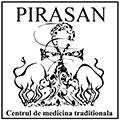Arthritis
Arthritis is another disease affecting most of the population on Earth. The respective predisposition is triggered by climatic conditions. Over 100-150 million persons are suffering from various forms of arthritis, the most common of which is osteoarthritis or rheumatoid arthritis. Osteoarthritis occurs where the cartilages have been worn. The first tissue that is destroyed as…
